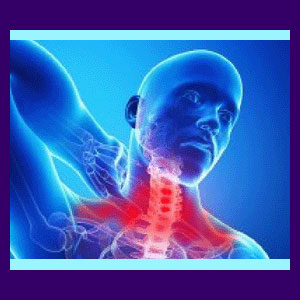
Experiencing pain when turning the head is one of the most common motion-related symptomatic triggers for upper dorsalgia. The circumstances under which pain is generated are remarkably similar in every patient, but the underlying causative mechanisms for pain can vary greatly. This is why each case of rotational neck pain must be carefully evaluated in order to guide the patient into the correct form of treatment, if any is needed at all.
Neck rotation is a necessary part of living a normal life. We constantly turn our heads to the side to perform many of our daily activities. Of course, since our eyes are frontal-facing, turning the head facilitates a complete field of vision. The ability to rotate the head improves our personal safety and physical prowess throughout life. Patients who can not turn their heads for fear of pain, or due to actual inability, are greatly disadvantaged.
This essay takes a unique look at rotational-related neck pain. We will examine the symptoms most often experienced, as well as the potential causations that create such misery from simple movements.
Pain When Turning Head Problems
Typically, patients who experience pain when turning their heads to one side or the other will demonstrate markedly decreased ranges of motion. Some of the patients are obviously guarding against the pain, but can otherwise physically rotate their head. This is a classic instance of pain-related activity avoidance. Other patients might demonstrate terrible stiffness and decreased range of motion due to some structural inability to rotate the head. Structural causes can come about from both muscular and spinal origins.
Most patients will suffer primary pain when turning the head to one side, and only secondary pain when turning the head the opposite way. Logically, range of motion on the primarily pain side is usually much reduced when compared to minor decrease in ROM on the secondary pain side. Some patients will have equal pain when turning the head to either side. Only a few patients will have pain exclusively when turning to one side only, but no symptoms when rotating the head the opposite direction.
The majority of patients will suffer pain regardless of how the head is turned, while some will experience less or more pain if they look upwards while turning the head or downwards while turning the head. Pain might be centralized over the spine or experienced unilaterally or bilaterally slightly or largely off center from the spine. Some patients have pain that extends all the way behind the ear, down into the upper back or even radiating into the shoulder or arm.
Anatomical Sources of Pain When Turning Head
There are many possible and often contrasting reasons that commonly explain rotational neck pain. The list below explores the most often seen of these sources:
Muscular issues are extremely widely experienced and can cause rotational neck pain through several mechanisms. Strain or recurrent strain (RSI) can tear muscles, causing painful ranges of motion in one or more tissue groupings. RSI can also cause muscular scar tissue which might result in functional binding and minor pain over extended timelines. Severe muscular, tendon and ligamentous traumas can cause general neck pain that is exacerbated when the head is mobilized. Finally, muscular imbalances can create pain upon rotation when one set of tissues becomes weak and elongated, while it’s matched set becomes short and overly taut.
Spinal issues can also create rotational neck pain. There may be mechanical reasons why the neck does not rotate without pain. These might include degenerative disc disease, facet joint syndrome, hyperlordosis or cervical scoliosis. There may also be pain due to neurological compression that can be caused by a herniated disc, lordosis abnormality, cervical spondylolisthesis, or general spinal arthritis, especially in the central vertebral canal or neuroforaminal spaces.
Some patients are suffering from mindbody variants of rotational neck pain. These are created by oxygen deprivation of any of the tissues that can cause structural neck pain when turning the head, including the neck muscles, tendons, ligaments or nerve roots. This type of ischemia is commonly seen in TMS patients and has been carefully studied by experts in mindbody medicine. Unfortunately, most traditional physicians and complementary caregivers have little to no training in the diagnosis or treatment of these syndromes, which explains why so many of these patients suffer misdiagnosis and poor therapy outcomes.
Painfully Turning Head
The vast majority of rotational neck pain problems are either muscular in origin and extremely temporary or are structural and recurrent as flare-ups. Over 90% of patients should feel better within a few days to a week’s time, with little or no residual pain. Some conditions will require longer timelines to resolve, but few require any type of medical or complementary treatment.
Structurally-based rotational pain syndromes may require medical or complementary medical intervention and might even be indicated for surgery in rare cases. Of course, before even considering any type of invasive care, the patient must be 100% certain of the accuracy of the diagnosis or else face the common incidence of failed treatment due to iatrogenic misdiagnosis.
Patients who are suffering from mindbody variants of rotational neck pain should certainly become learned about why these syndromes exist and how they can be solved. To facilitate this process, we recommend knowledge therapy as an effectual and completely safe method of care. In fact, we have seen many stubborn and recurrent pain syndromes completely disappear once the patient realizes the true nature of the condition and explores the psychoemotional origins of their pain imperative.





